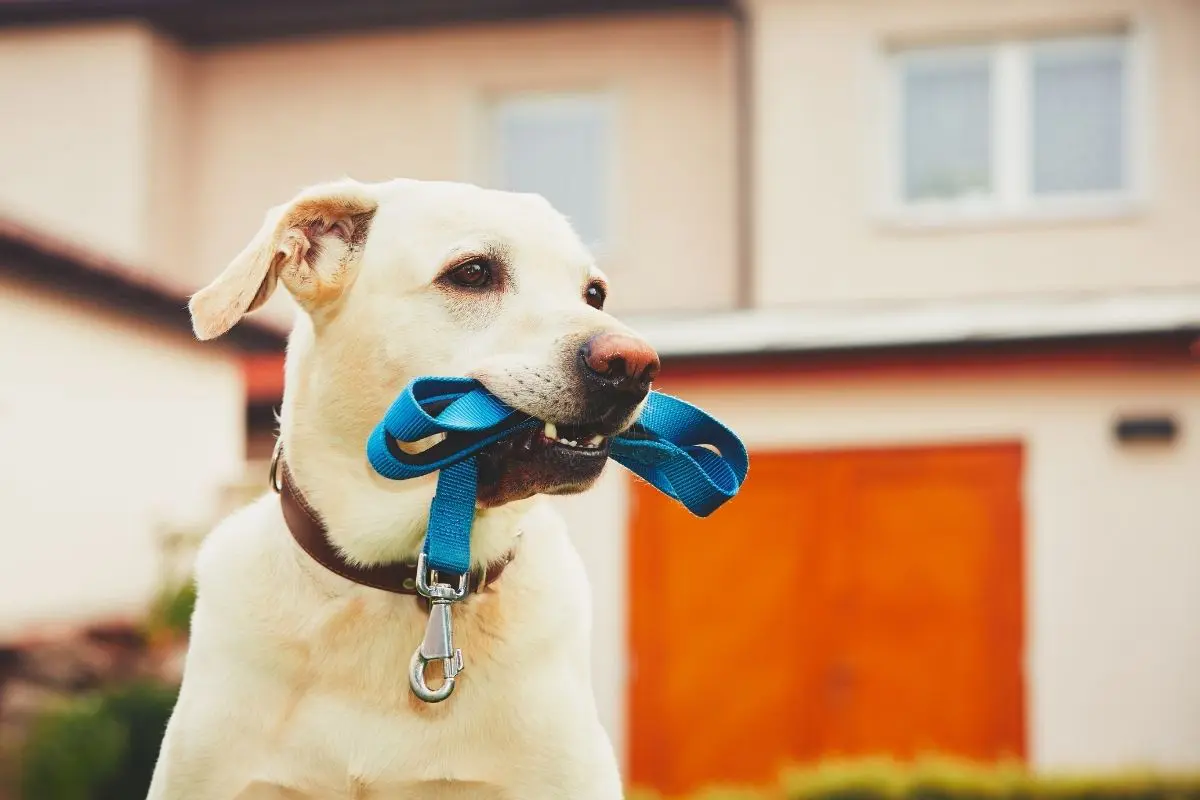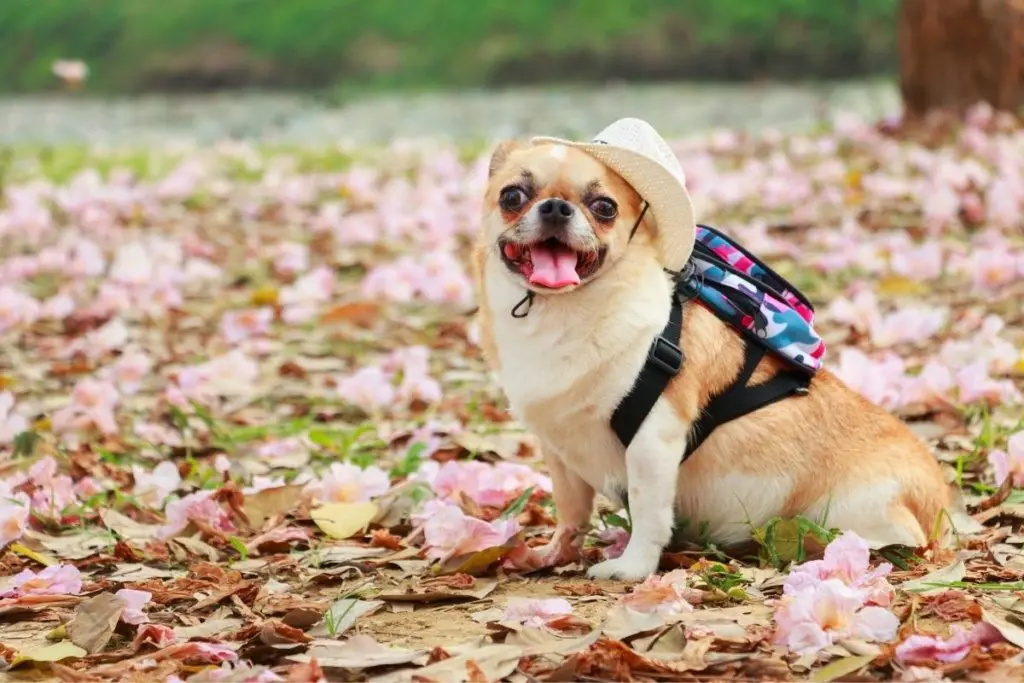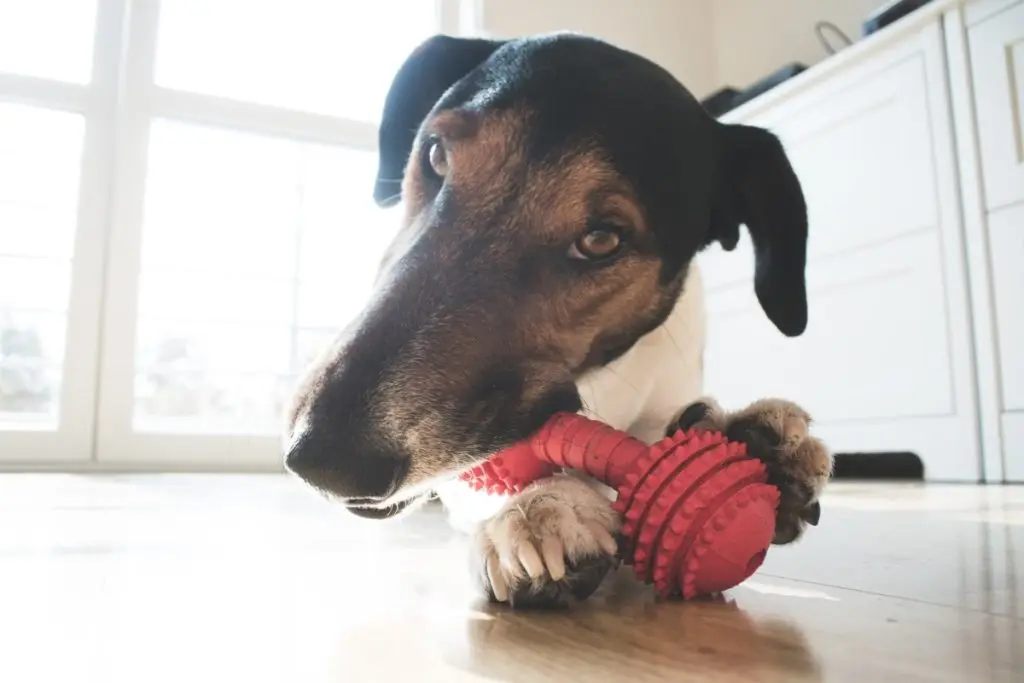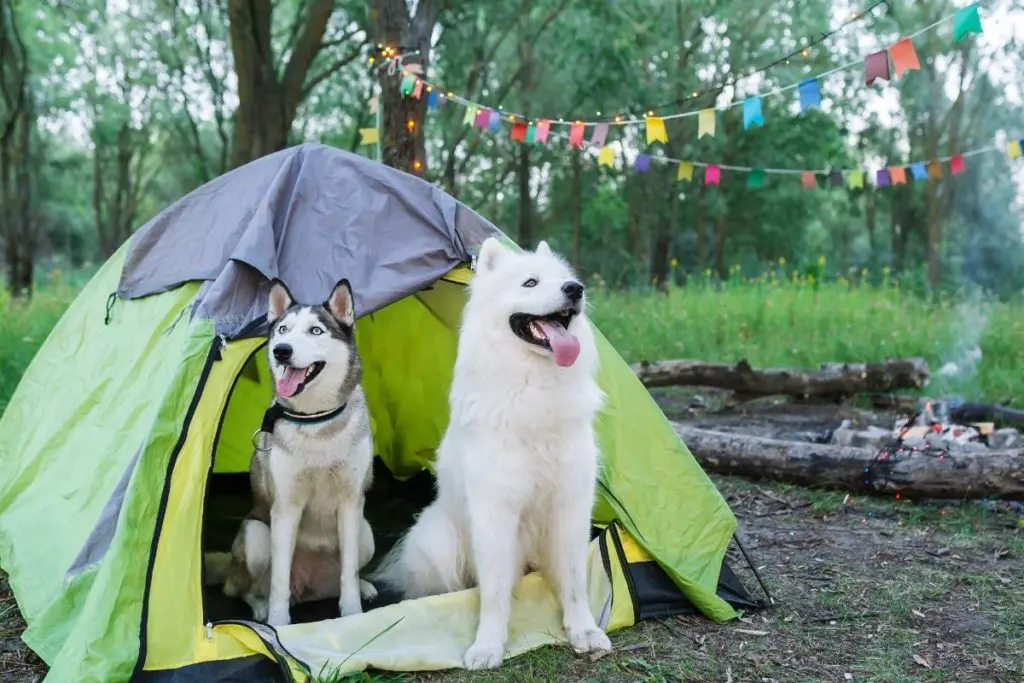No matter what breed you adopt or buy from a breeder, every dog needs to be taken for walks. Some dogs require minimal exercise while others need frequent jaunts outside; it is important to know how often and far you should walk your dog. How often do you walk your dog? And more importantly: how often should you walk a dog? Let’s dive in.
Benefits of Regular Dog Walks for Canines and Humans:
One of the wonderful things about having a paw-tner (yes, that happened) is enjoying those walks with them! Walking your dog benefits both your dog and you.
If you need the extra motivation to get out, here are just a few proven benefits:
- Improves cardiovascular health and lowers blood pressure
- Helps to maintain a healthy weight and prevent obesity-related health issues
- Provides fresh air and sunshine; let’s face it, we all need to get outdoors more
- Encourages socialization; your dog needs to see and smell other dogs
How Much Exercise Does My Dog Need?
Obviously, this is a somewhat variable answer that depends on a lot of different factors. Some of these factors are what made you choose the breed you brought home in the first place. If you didn’t do much research before adopting or purchasing a family pet, then you might be surprised at how much — or little — exercise some breeds need in order to maintain their health and sanity.
For example, many people believe that Great Pyrenees are an excellent choice for an apartment because they sleep on average 18 hours a day. But, what they do during those 6 waking hours is herd sheep, run across acres of farmland, and destroy predators. If you cannot give them that type of activity during their waking hours, a Pyrenees is probably not a good option for your family.
Types of Dog Breeds and Exercise Requirements
Working dog breeds, even mixes, require more exercise than non-working breeds. After a hundred generations of hunting, retrieving, scavenging, herding, and protecting, your dog has some instincts that are deeply ingrained in their DNA. These instincts give them more energy to burn than non-working breeds.
| Group | Energy Level | Minimum Minutes/Day | Maximum Minutes/Day |
| Brachycephalic | Low | 20 | 30 |
| Sighthounds | Low | 30 | 45 |
| Giant | Low | 30 | 45 |
| Toy/Small | Medium | 30 | 60 |
| Terriers | Medium | 60 | 90 |
| Scent Hounds | Medium | 60 | 90 |
| Working | High | 60 | 120 |
| Sporting | High | 60 | 120 |
| Herding | High | 60 | 120 |
Low Energy Dogs Walking Guide
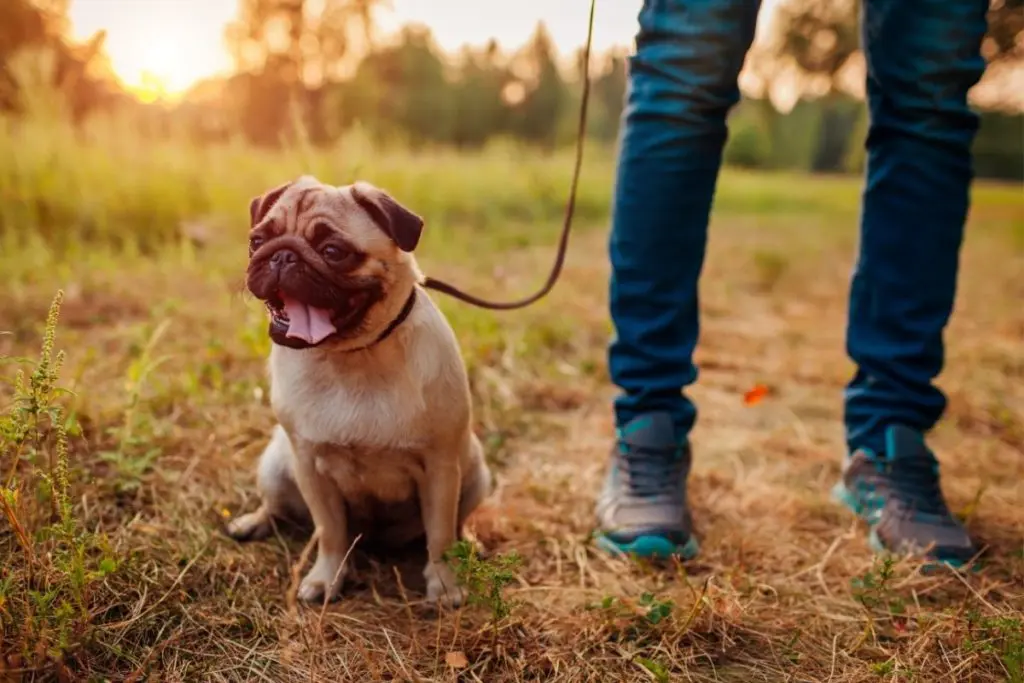
1. Brachycephalic Breeds
Some breeds have short noses and flat faces and are referred to as brachycephalic or short-faced. These smooshy faced pups have a hard time breathing and can quickly overheat outside on walks. Keep exercise and walks short and moderate and never in hot weather.
Regardless of their condition, brachycephalic Breeds still need exercise, so you cannot forgo it altogether (especially since these breeds are prone to obesity). These smooshy babies need 20-30 minutes of exercise every day. Short walks and indoor play are encouraged over longer, outside activities. Use a harness instead of a collar when walking your brachycephalic breed.
3. Sighthound Group
Sighthounds were bred to hunt by sight and then chase the prey down. They are made for speed and agility.
Despite being the fastest dogs in the world, they don’t need much exercise. 30-45 minutes per day is how much you should walk your dog if you own a sighthound.
4. Giant Dog Breeds
These massive breeds weigh in at 60-120+ pounds and have different exercise and health requirements than smaller dogs.
Some giant breeds love to swim, which is an excellent option if your dog is experiencing hip or joint discomfort. In this case, walking is a less than ideal option. Your giant breed pup needs 30-45 minutes of moderate exercise per day.
Medium Energy Dogs Walking Guide
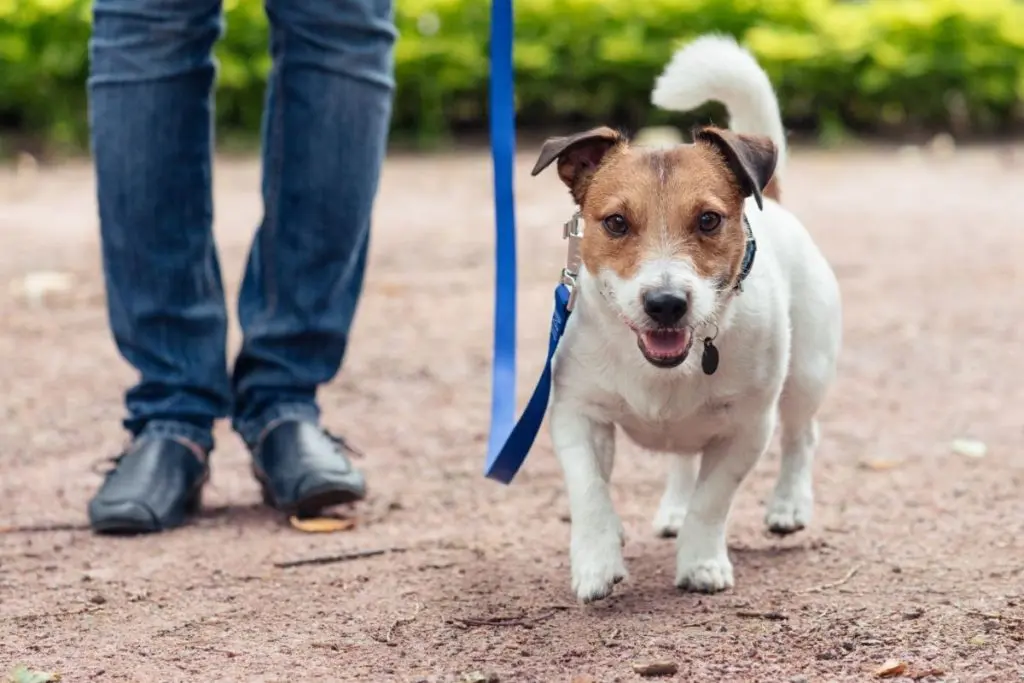
1. Toy and Small Group
Whether in a stroller, backpack, or on a leash, your little dog loves being in the great outdoors. Small dogs tend to be fearful and prone to injury, so walks on level terrain are recommended over a rocky trail. Little dogs can be pretty quick and have a lot of stamina. If they get tired, you can always pick them up and carry them home. These little dogs need 30-60 minutes of moderate exercise per day which you can accomplish either indoors or outdoors.
2. Terrier Group
Terriers were bred to run or dig out vermin, foxes, and birds from fields and out of holes. These breeds are tenacious little hunters and are prone to attacking and biting. Not all terrier breeds are feisty little killers, but they all have similar energy levels. Training a terrier is difficult because they are so stubborn but they love walks and need at least 60 minutes of walking with 30 minutes of vigorous activity like chasing a ball.
3. Scent Hound Group
These floppy-eared, wrinkly pups were bred to hunt game. Walks require the use of a leash since the sight of a squirrel will send your hound running. Trail walks in the woods are enjoyable for your scent hound, but so is a stroll in town. These cute sniffers need 60 to 90 minutes of walking per day along with moderate to intense activity. The only breed in this group that may need less activity is the basset hound.
How Often Should You Walk Your Dog? High Energy Dog Breeds and High Exercise Needs
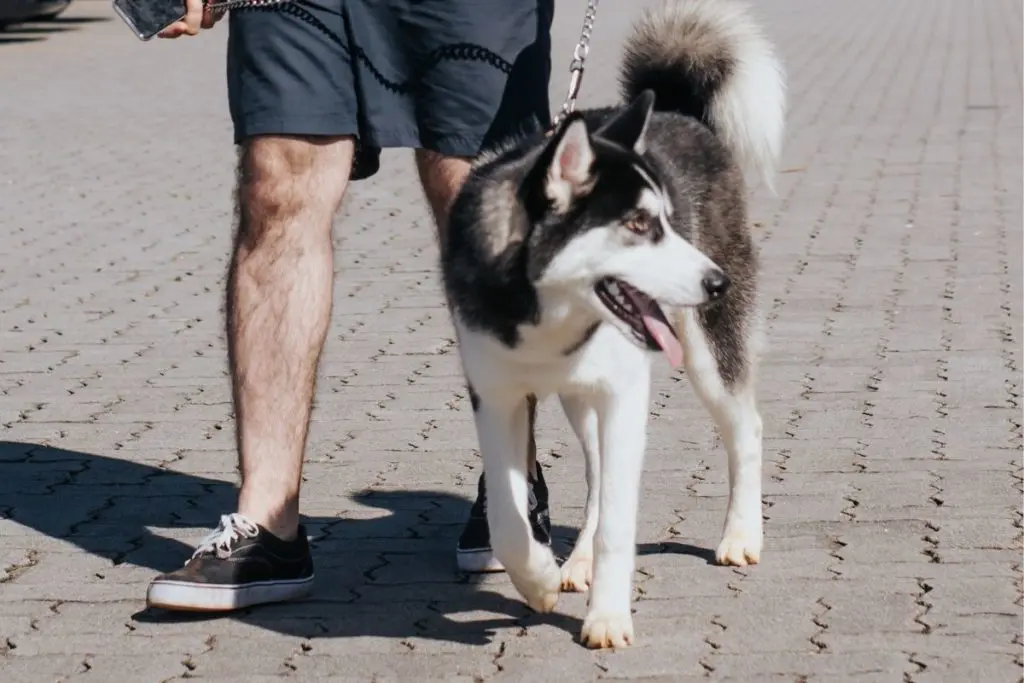
1. Working Group
Working dogs put in long hours pulling sleds, carts, hauling gear, or acting as a guard dog. A working dog would love a day filled with guarding your front door or pulling children in a wagon. Training these pups is essential to everyone’s happiness.
If you have never owned a working dog, please note that they are not dogs for beginners. Working dogs tend to be large and sometimes difficult to handle. They need between 60 to 120 minutes of moderate exercise per day. Most working dogs don’t need high-intensity exercise or running to be happy. Intense play can be hard on their larger bodies.
2. Sporting Group
These floppy-eared pups were bred to flush out game birds in the woods and retrieve them from water. Sporting breeds need between 60 to 120 minutes of brisk exercise every day. This can include walking, running, playing fetch, swimming, and hiking. These breeds tend to be leash pullers, but that doesn’t mean that they hate being walked. Invest in a properly-fitting harness to make walks more enjoyable for both of you.
3. Herding Group
Herding dogs are bred to move livestock. Ingrained in their DNA are the skills and know-how to run around livestock, bark, nip at their heels, and use dominating eye contact. Without farm animals to chase around, herding dogs tend to herd people in their homes. This instinct can lead to your herding dog nipping at your family members’ heels to corral them.
Training herding breeds is easy because they want to learn new tasks. It makes them happy to have work to do. They can be leash trained easily and will love learning commands to execute during walks. They need 60 to 120 minutes of walking per day with at least 60 minutes of vigorous exercise. This can include trail running, hiking with a pack, and long-distance fetch using a ball launcher (like a Chuckit) or Frisbee.
How Often Should You Walk a Puppy?
Puppies need to go to the potty more frequently than adult dogs, which means that they require more walks throughout the day. Watch for your puppy’s cues that they need to go outside: whining, standing or jumping at an exterior door, or jumping on you to get your attention. Frequent walks are not only enjoyable for you and your puppy, but more walks means less chance that your new family member will pee in your home. Exercising increases your puppy’s bone density, so it is essential to play and walk with your little guy every day.
| Age | Small Breed (2x/Day Max) | Large Breed (2x/Day Max) |
| 2 months | 10 minutes | 7 minutes |
| 3 months | 15 minutes | 10 minutes |
| 4 months | 20 minutes | 13 minutes |
| 5 months | 25 minutes | 16 minutes |
| 6 months | 30 minutes | 20 minutes |
Walking Tips for Senior Dogs
Your senior pup needs exercise, too! But how do you make sure your senior dog is able?
Always watch out for signs of arthritis or joint stiffness or discomfort. Keep walks short and moderate unless your dog indicates they can handle more. Both diet and exercise are important in keeping your older dog healthy to prevent or lessen joint pain.
Frequently Asked Questions
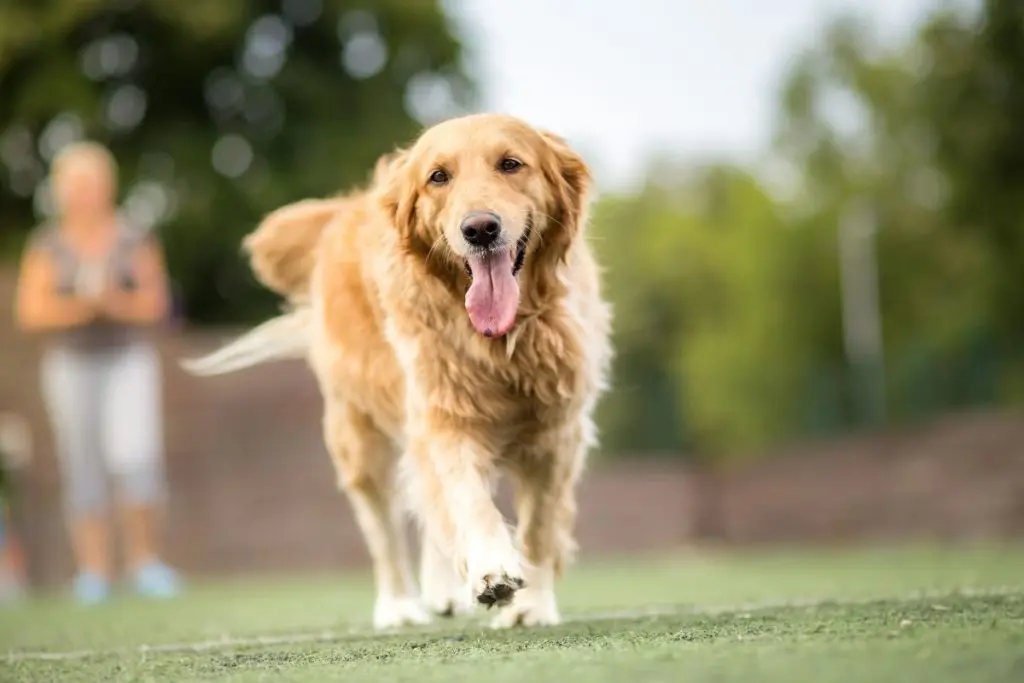
How Far Should You Walk a Dog?
Time is more important than distance, but you must walk at a brisk pace if you have a high energy breed. You are guaranteed to cover quite a bit of ground on a 120-minute walk as opposed to a 20-minute one. However, if the pace is too leisurely, your dog might return home with even more energy than before.
How Often Do Dogs Need to Be Walked?
If you live somewhere that has access to a fenced-in yard, you don’t need to walk your dog as often. Walks can be purely for exercise and enjoyment rather than a mission to eliminate waste. If you are an apartment dweller, you will need to walk your dog more frequently. Adult dogs should be able to last up to 12 hours between potty breaks. Every dog is different, so if your pup needs more potty breaks, they will get more walks.
How Much Should I Walk My Dog?
Ideally, you and your dog would be getting outside at least twice per day, every single day. Even if your dog doesn’t need to be walked to potty, walks are still necessary for their overall health and well being.
What Do I Do if My Dog Doesn’t Like Walks?
Try a new leash and harness combo and bring treats that they can’t resist. Make it a positive and rewarding experience every single time. If you act like the walks are the most fun activity ever, your dog will eventually buy the hype. If you have a little dog that isn’t keen on walks, take them in a stroller or backpack and only put them on a leash on the ground for a couple of minutes at a time.
Further Reading
